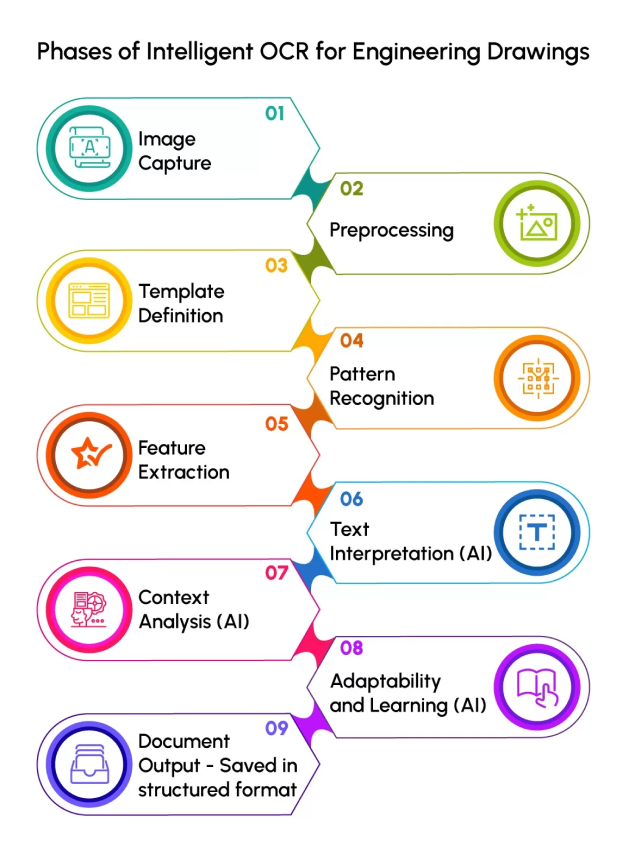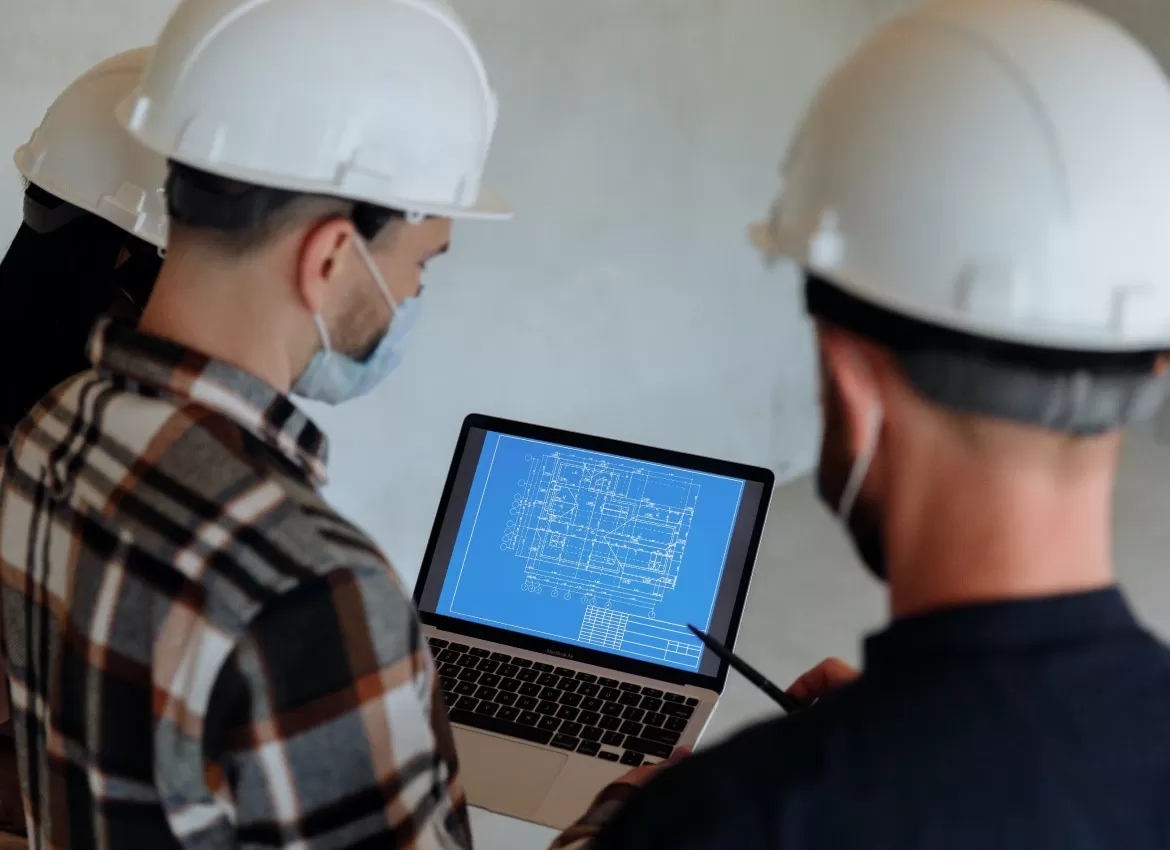Traditional OCR tools, typically designed for standard text documents, encounter challenges when used for specialized documents like engineering drawings. Consider an engineering blueprint with complex layouts, technical symbols, and non-standard text formatting—traditional OCR often struggles with the unique complexities of CAD data extraction. It may misinterpret text that’s oriented at various angles or placed in unusual positions, and it often overlooks engineering-specific symbols and notations that are critical for accurate comprehension. Additionally, these tools lack contextual awareness, which can lead to misinterpretations, as they are not fine-tuned for complex documents, resulting in lower accuracy.
Model-based OCR overcomes these limitations by offering tailored solutions designed for intricate layouts, specialized symbols, unconventional text formatting, and contextual understanding. This specialized technology, or Model-Based Optical Character Recognition, is crafted for converting complex document images into machine-readable text, especially those with structured layouts. Unlike generic OCR, which uses universal algorithms, model-based OCR applies customized templates and predefined models tailored to specific document types, layouts, or industries. These templates set expectations for the document’s structure, enabling accurate recognition and extraction of text, symbols, and patterns.
Imagine an intricate blueprint for a gearbox component, featuring a shifting layout, numerous geometric shapes, specialized engineering symbols, and labels at various angles, often embedded within complex diagrams. In such cases, model-based OCR, enhanced with AI, becomes essential. AI-integrated OCR, or Intelligent OCR, leverages machine learning to understand context within the blueprint, allowing it to distinguish critical text and symbols, even when they appear unconventionally or amidst detailed diagrams.
This AI-driven approach enables dynamic adjustments in recognition parameters, allowing the OCR system to adapt as needed. For example, Intelligent OCR can detect and adjust to varying text orientations or placements in different blueprints, adapting its criteria dynamically to maintain recognition accuracy.
How AI-Based OCR Works for Engineering Drawings
Breaking down the process into phases helps clarify the complex steps in AI-based OCR development for engineering drawings.
1. Image Acquisition:
The process begins by capturing a high-quality image of the engineering drawing, as OCR accuracy relies heavily on image clarity. Scanners are typically used to ensure high resolution and uniform lighting, though digital cameras can also capture the drawings if configured correctly.
2. Preprocessing:
After acquiring the image, preprocessing enhances its quality. Techniques like noise reduction, contrast enhancement, and image cleanup are applied. For engineering drawings, converting the image to binary (black and white) is often essential to improve character recognition accuracy.
3. Text Detection:
Using pattern recognition techniques, OCR software detects text regions in the image. Methods such as edge detection and contour analysis help differentiate text from graphical elements like lines and symbols, which are common in technical drawings.
4. Character Recognition:
This core OCR phase involves analyzing and converting the text within detected regions into machine-readable format. While traditional OCR relied on pattern matching, modern systems incorporate machine learning and neural networks for improved accuracy, particularly for complex fonts and handwritten text.
5. Text Verification and Post-Processing:
To enhance accuracy, recognized text undergoes verification and post-processing. Techniques in this stage include:
- Dictionary and Language Model Checking – AI-based OCR compares text against dictionaries and language models to correct spelling errors and ensure meaningful output.
- Context Analysis – AI analyzes the context to determine proper word usage, such as identifying whether a term should be a verb or noun based on the surrounding text.
- Formatting Correction – AI adjusts formatting issues, such as line breaks or spacing, to refine the text’s presentation.
- Noise Reduction – AI helps remove errors from character recognition, yielding cleaner and more accurate text.
- Pattern Matching – AI may match recognized text patterns against predefined templates, especially helpful for structured documents like blueprints.
- Machine Learning for Correction – AI learns from user corrections, adapting over time to improve its recognition accuracy based on feedback.
6. Output:
The final output is a digital version of the engineering drawing, with text content in a machine-readable format, typically saved as a PDF, plain text, or in a structured database for easy access and further processing.

Enhancing your workflow through
AI integration is key to future success.
processes and improve efficiency!
I design and refine AI solutions that make workflows smarter and turn data into actionable insights. With expertise in OCR, deep learning, and computer vision, I focus on translating complex concepts into reliable, scalable systems that solve real-world problems and create measurable value.





